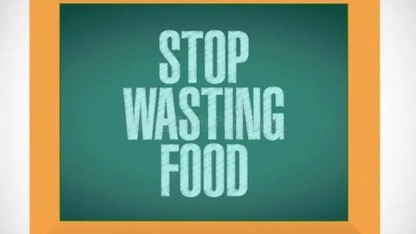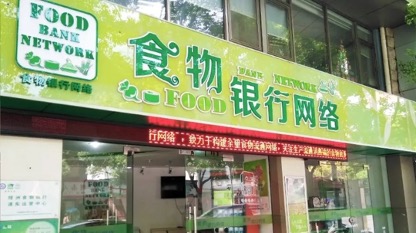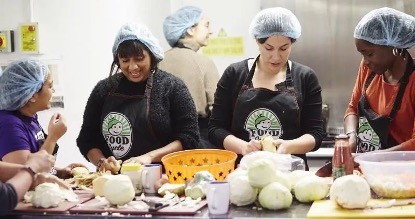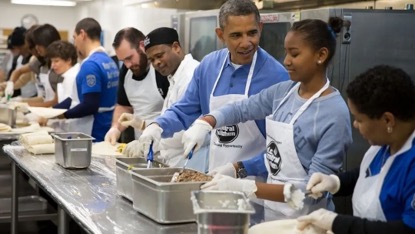VA Insight | Combat Food Waste: What are the Opportunities for NGOs and SEs?
At present, one-third of the world’s food is lost or wasted at various degree in the process of food production and consumption. With China’s rapid economic growth and improvement of living standards, the problem of food waste has become increasingly prominent. What roles can NGOs and social enterprises play in reducing food waste, which has been a topic of global concern? What are the opportunities and approaches for these organizations to contribute? Here Venture Avenue is to provide some thoughts and suggestions.
Food waste has become a hot social topic
Although China is basically self-sufficient in the supply of staple food (rice, wheat, corn), most feed products are still highly dependent on imports. Take soybean as an example. In recent years, China imports over 80 million tons of soybean annually, accounting for 80% of the total grain import. Under such circumstances, China’s food security is facing uncertainties, especially when the global food supply is under threat due to the current global pandemic, the expansion of locust plagues, the deterioration of China-US relations, and the long-term impact of climate change.
On the one hand, the volume of grain imports is enormous and China’s food security is still risky; on the other hand, the amount of food waste is tremendous.
In developing country like China, food waste caused by technical issues accounts a large proportion of all the reasons. According to statistics, after grain harvesting, due to poor storage facilities, insufficient drying capacity and lack of technical support, the loss of grain in the storage process reaches 20 billion kg. In the transportation phase, the grain loss is over 7.5 billion kg resulted from the outdated transportation methods and the shortage of specialized transportation tools.
The waste on the dining table is astonishing too. According to the “Global Food Losses and Food Waste” 2011 report from the Food and Agriculture Organization of the United Nations, the consumer phase is the stage with the largest losses in China, nearly 50% of total food waste. “The Connotation and Realization Way of Sustainable Food Consumption in China” shows that, in 2015, the total amount of food waste at the consumption level in China’s catering industry was equivalent to the annual rations of 30-50 million people.
Therefore, the government is increasing its emphasis on reducing food loss and waste. For instance, the State Council issued the “Notice on Further Strengthening The Work of Saving Food and Anti-Food Waste” in 2010 and the “Opinions on Practicing Thrift and Against Food Waste”. In 2016, for the first time, the State Administration of Grain issued the 13th Five-Year Plan for the grain industry, including quantitative indicators for reducing food loss. The report of the 19th National Congress of the Communist Party of China in 2017 clearly pointed out that it is necessary to “advocate a simple and green (low-carbon) lifestyle and oppose extravagance, waste and mindless consumption”. In August 2020, President Xi once again made important instructions against food waste, requiring to establish a long-term mechanism to resolutely stop food waste at the consumer level.

The feasibility to reduce food waste at the consumption level
Food loss happens in every stage of the food supply chain, including agricultural production, postharvest and storage, processing and packaging, distribution and consumption, covering five stages from the field to the dining table (see below figure). From planting, crops may be lost due to technology, diseases, insect, etc. In the following stages, things like poor storage, fine processing and packaging in factories, improper logistics management and consumer waste also cause different degrees of food loss and waste.

The author believes that the consumption, as the end of the chain, can be a possible starting point for local NGOs and SEs to solve food waste issue in the current development stage for three reasons.
Firstly, the consumption happens in various scenes, such as supermarkets, communities, restaurants, canteens, schools, and so on. A large number of consumers are involved in these scenes, who can be directly reached, influenced, and changed by these organizations.
Secondly, these scenes are also the most familiar and active fields for many frontline NGOs and SEs. The entry barrier is low, and a solid foundation for action has already been built, making it easier for them to initiate movement.
Finally, starting from the consumption level to reduce food waste can push for changes by mobilizing upstream and downstream players. Reshaping consumers’ mindset and behaviors can force the players in upstream, like agricultural production and food processing, to make changes favorable for reducing food waste. Such reshaping actions can weaken consumers’ prejudice for the ugly fruits and leftovers, discourage the pursuit of the extreme freshness of food, and reduce the requirement of excessive refinement of food. In addition, reducing food waste at the consumption level can directly cut down the load of the back-end food waste to be processed and the carbon emissions in the associated processes.
Therefore, NGOs and SEs will have promising chances to successfully reduce food waste at the consumer level.
Approaches for NGOs and SEs to intervene in food waste at the consumption level
Not many NGOs and SEs have taken actions to solve the food waste issue, while those who have all started to intervene from the consumption stage. Solutions have been explored from multiple dimensions, including resource integration, co-creation, empowerment with technology, and community engagement.
1. Resource Integration
Unlike the public sector and the private sector, NGOs and SEs, as the third sector, can make the most of “social capital” and integrate diverse social resources to build trust for multiple stakeholders, hence facilitating the completion of the third distribution in the field of food waste.

For example, through B2C model, Shanghai Food Bank Network collects leftovers from enterprises, schools, supermarkets and government agencies and distributes the food to people in need for free. In 2019, Food Bank Network saved 122 tons of food that would have been wasted, with a total value of more than 11 million yuan, and directly benefited over 500,000 people.
2. Co-creation
Co-creation, different from the profit-driven commercial partnership, is to create solutions by collaborating with multiple players who have a common goal, aligned value, and consensus on sharing resources and by combining their perspective strengths and resource advantages.
In 2017, by leveraging its communication channels and media advantages and FAO’s industry influence, Bottle Dream, together with many art galleries, food enterprises, organic farms and FMCG companies, organized a large offline leftover party, namely “no waste, love well” in Shanghai. Five hundred twenty people attended the event. Media communication via multiple online and offline channels for the event reached nearly 180 million people. It was also broadcasted in a popular CCTV’s program, “Focus Report”. With the chefs’ help, the leftovers and ugly food were reintroduced to the table. The event made people rethink the real value of food and helped promote a mindset of accepting leftovers for consumers in a wide range by leveraging the advantages of traditional and new media.

3. Empowerment with Technology
With advanced information technology, NGOs and SEs can make great accomplishments with less effort in program operation, data management, etc. to solve the social issue related to food waste.

For instance, the recently launched “Clear Plate” campaign provides a new model against food waste by using technology. With the AI image recognition technology, the “CP” mobile app allows users to get points after their cleared plates get identified by the app. Both material and non-material incentives are embedded in the program – the points can be exchanged for special gifts or donations for charities. Some companies also offer a certain amount of matching donations. By catalyzing users’“profit-seeking psychology”, the app motivates users to actively check in the app. So far, the number of “CP” app users has exceeded one million, with 200,000 active users every month, and more than 300 tons of food has been saved.

In the United Kindom, OLIO, a social enterprise, connects neighbors with each other and with local businesses in 45 countries worldwide, so surplus food can be shared instead of being thrown away. The Internet has helped accurate point-to-point connections for distributing leftovers. Till now, more than 2 million users of OLIO have shared food 6.5 million times.
4. Community Engagement and Intervention Differentiation
Another advantage of NGOs and SEs lies in their close connection with the community. With this advantage, NGOs and SEs can help reduce food waste and meanwhile improve social relations by using food as a medium in the community and even in society. These organizations not only make reuse of tons of food that might have been abandoned but also revive the interpersonal relationships in communities.
As a local food bank, Food Cycle is close to the community. It collects leftovers and reprocesses them into delicious meals for the vulnerable groups. It also creates opportunities for those people to know and communicate with each other. Since its establishment in 2009, Food Cycle has recycled 425 tons of wasted food and provided more than 1 million meals for residents.

In addition to adopting the model like Food Cycle, DC Central Kitchen, a social enterprise in the United States, provides free training in culinary techniques for dropout and unemployed young people to help them get jobs. Over the past 30 years, it has saved about 450 tons of wasted food each year and supported more than 1700 young people aged 18 to 24 in the community to build careers in cooking.

In summary, compared with foreign countries, China’s NGOs and SEs are still in the exploratory stage in reducing food waste with less local practices. By considering the internal and external conditions like their mission, strengths and resources, and the overall industry environment, NGOs and SEs that are eager to solve the food waste issue should select an appropriate entry point in the food supply chain, optimize the use of resources, and continuously enhance their professional capabilities in order to create a more sustainable future.
